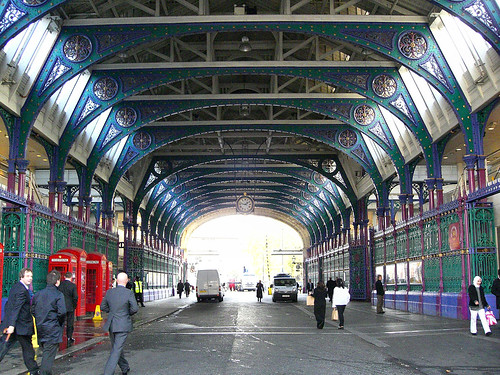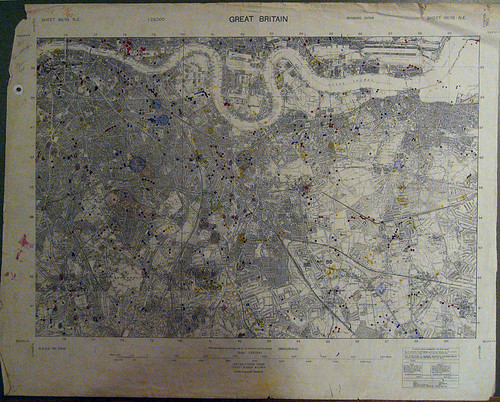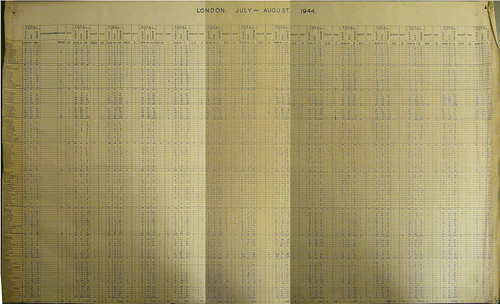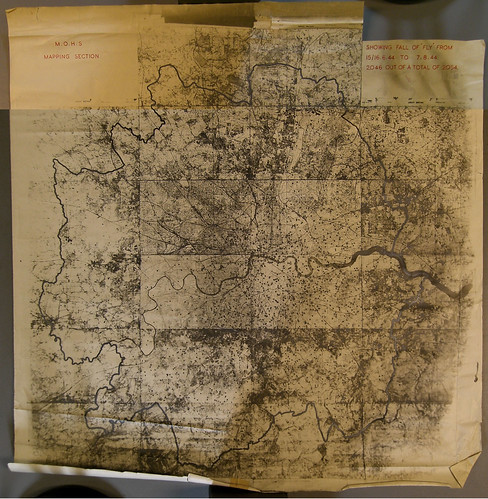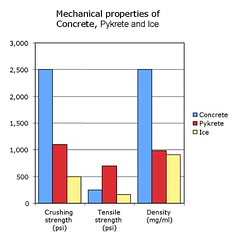 The Wikipedia article on Pykrete cites these properties. While its crushing strength is inferior to concrete, it compares favourably weight-for-weight. It has greater tensile strength, and is far less dense.
The Wikipedia article on Pykrete cites these properties. While its crushing strength is inferior to concrete, it compares favourably weight-for-weight. It has greater tensile strength, and is far less dense.Interestingly, it is slightly denser than ice (0.98g/ml, compared with 0.91g/ml for pure ice), and a simple chunk of pykrete would float far lower in cold water than a similar-sized chunk of ice. I should be able to confirm this with my own samples, using the Archimedes principle.
Polymer scientist Herman Mark was the first to propose using wood pulp to strengthen ice, and describes the proposal in his 1993 autobiography, From Small Organic Molecules to Large.

Max Perutz published this schematic diagram of the bergship and described further properties of pykrete in his 1948 paper, A Description of The Iceberg Aircraft Carrier, in The Journal of Glaciology, volume I. In my next post, I shall discuss data from this paper.
Perutz discusses his wartime experience and his work on the project in his essay Enemy Alien published in I Wish I'd Made You Angry Earlier and in Is Science Necessary? His biographer, Georgina Ferry, expands further in Max Perutz and the Secret of Life (2007).
J D Bernal's part in the project is described in two biographies: J.D. Bernal: A Life in Science and Politics by Brenda Swann and Francis Aprahamian, and Andrew Brown's J. D. Bernal: The Sage of Science.
While David Lampe's 1959 biography, Pyke, the Unknown Genius, gives a particularly fanciful account, it does provide this fabulous cutaway diagram of the proposed HMS Habbakuk.
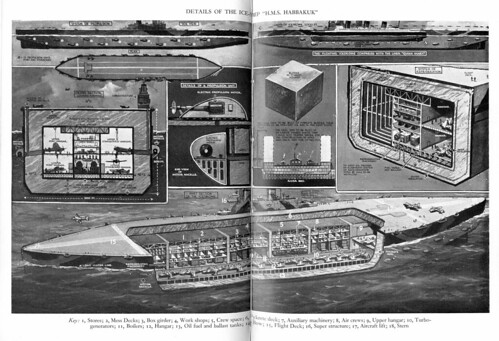
There are apparent discrepancies between the various accounts. I hope to make a trip to Kew to visit the National Archives soon. They have various documents relating to the project, including Adm. Noble's reports on Habakkuk/Tentacle and Proposals and inventions of Mr Geoffrey Pyke; gravity propelled ball bomb, pykrete and power driven rivers which may help to clarify the history. Or else muddy the waters still further with a mush of wood pulp.

